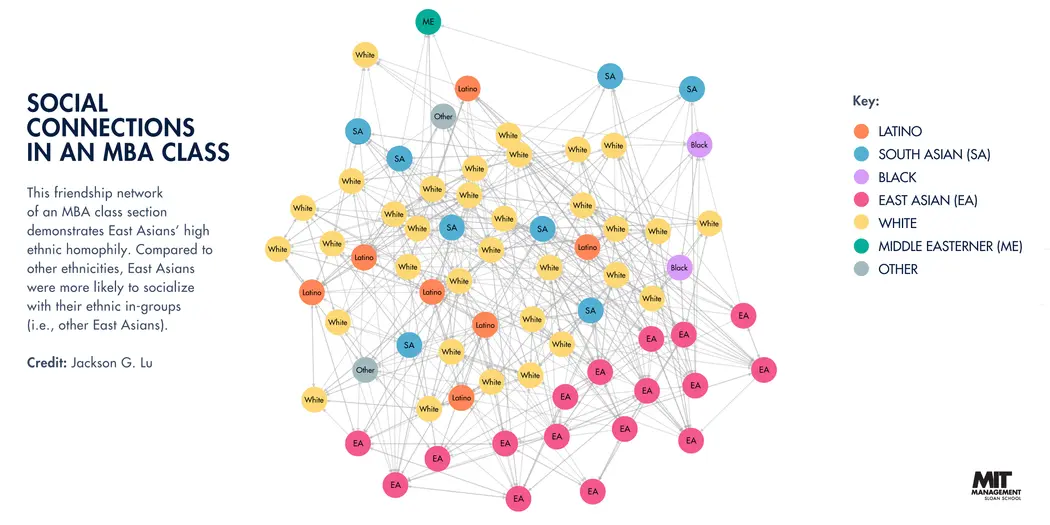Credit: ajijchan / iStock
How multiethnic networking could propel more East Asians into US C-suites
When Parag Agrawal, an Indian American, was recently named CEO of Twitter, he joined a roster of South Asian CEOs who have secured leadership roles in prominent U.S. companies. Alphabet, IBM, Microsoft, Adobe, and Mastercard, for example, are all led by Indian Americans. By contrast, there are few prominent East Asian CEOs in the U.S. — despite their high educational achievements and economic prosperity.
MIT Sloan assistant professorhas spent many years studying this phenomenon, often referred to as the “bamboo ceiling.” In 2020, Lu and colleagues published a research article in the Proceedings of the National Academy of Science showing that East Asians (e.g., ethnic Chinese, Japanese) are less likely than South Asians (e.g., ethnic Indians, Pakistanis) and whites to attain leadership roles in American organizations, in part because the non-assertive communication style of East Asians does not match the leadership prototype espoused by American mainstream culture.
Now, in a new research paper published in the Journal of Personality and Social Psychology, Lu has revealed an additional mechanism contributing to East Asians’ lower leadership emergence: their higher propensity to network with their ethnic in-group members (i.e., other East Asians), also known as ethnic homophily. Lu’s new research demonstrates that East Asians — but not South Asians — are less likely than other ethnicities to emerge as leaders in multiethnic environments partly because East Asians tend to socialize more with their ethnic in-group members.
“When a person frequently socializes with ethnic groups other than their own, this person is more likely to be perceived as an inclusive leader who can bridge the values and interests of different ethnic groups, a characteristic central to leadership emergence in multiethnic environments,” Lu said.
To research the phenomenon from a social network perspective, Lu conducted three studies in multiethnic U.S. law schools and business schools — the fountainheads of prospective leaders. First, he analyzed a large survey of 54,620 students from 124 U.S. law schools and found that East Asians had higher ethnic homophily than all other ethnicities studied (whites, South Asians, Blacks, Latinos, Middle Easterners, and Native Americans). The next two studies examined friendship networks and leadership emergence in 11 class sections of new MBA students in a U.S. business school. Lu found that East Asians were the least likely to be nominated and elected as leaders, and East Asians’ lower leadership emergence was partly explained by their higher tendency to socialize with ethnic in-group members. These results held even after accounting for factors such as individuals’ assertiveness, general popularity, English proficiency, American/international status, and personality.
These findings were true for both East Asian Americans and East Asian internationals, suggesting that although East Asian Americans are native English speakers raised in the United States, their cultural upbringings may still predispose them to socialize more with their ethnic in-group, Lu said.
Lu’s research highlights a potential challenge posed to East Asians by the cultural mismatch between their ethnic homophily and the social relational dynamics required for becoming leaders in the multiethnic American milieu.
“Society should be aware of East Asians’ underrepresentation in leadership roles — rather than assuming that Asians are the model minority ‘doing just fine,’” Lu said. “To help East Asians break the bamboo ceiling, organizations may consider creating networking opportunities for interethnic interactions, such as interethnic mentorships and lunches.”
More broadly, Lu’s research provides insights into the question of how individuals can attain leadership in multiethnic environments.
“To emerge as leaders, individuals need to step out of their cultural comfort zone and socialize with others from different ethnic backgrounds,” he said.




